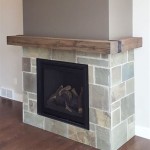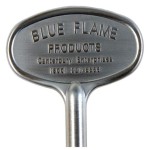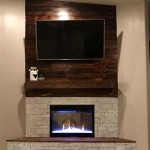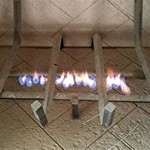Vented Gas Fireplaces: A Comprehensive Overview
Vented gas fireplaces represent a significant segment of the home heating and ambiance market. These appliances offer a convenient and aesthetically pleasing alternative to traditional wood-burning fireplaces, combining ease of use with a realistic flame appearance. Understanding the mechanics, advantages, disadvantages, and safety considerations associated with vented gas fireplaces is crucial for informed decision-making when considering installation or upgrading an existing heating system.
A vented gas fireplace operates by burning natural gas or propane to generate heat and create a visual flame. The "vented" aspect refers to the requirement of a direct connection to an exterior chimney or vent system. This system is essential for safely expelling the byproducts of combustion, including carbon dioxide, water vapor, and trace amounts of other gases. Without proper venting, these gases can accumulate within the living space, posing serious health risks.
The design of vented gas fireplaces typically includes a firebox, gas burner, realistic artificial logs or other decorative elements, and a control panel for regulating the flame height and heat output. Some models also incorporate features such as remote controls, thermostats, and blowers to enhance user convenience and heating efficiency. The aesthetic appeal is a major draw for many homeowners, with manufacturers offering a wide variety of styles to complement diverse interior design preferences, ranging from traditional to contemporary.
Key Point 1: Operational Mechanics and Safety Features
The operation of a vented gas fireplace relies on a precise balance of fuel delivery, air intake, and exhaust venting. The gas burner is designed to mix natural gas or propane with air in a controlled ratio, resulting in a stable and efficient flame. A pilot light, often ignited electronically, provides a continuous ignition source for the main burner. The flame is then directed across the artificial logs or decorative elements, creating a realistic fire appearance.
Safety is paramount in vented gas fireplace design. Several safety features are incorporated to prevent gas leaks, incomplete combustion, and carbon monoxide poisoning. A thermocouple or thermopile is a critical component that monitors the pilot light. If the pilot light goes out, the thermocouple signals the gas valve to shut off, preventing the release of unburned gas into the home. This mechanism is a standard safety measure across most vented gas fireplace models.
Another essential safety feature is the oxygen depletion sensor (ODS), also known as a pilot safety system. The ODS monitors the oxygen levels in the surrounding air. If the oxygen concentration drops below a certain threshold, which could indicate inadequate ventilation or a malfunctioning vent system, the ODS automatically shuts off the gas supply to the fireplace. This prevents the buildup of carbon monoxide, a colorless and odorless gas that can be lethal.
The venting system itself is a crucial component of safety. Vented gas fireplaces require either a B-vent or a direct-vent system. B-vents are typically used for fireplaces that vent vertically through a chimney. Direct-vent systems, on the other hand, can vent horizontally through an exterior wall or vertically through the roof. Direct-vent systems are sealed to prevent the leakage of combustion gases into the home, offering an added layer of safety. The chosen venting system must be installed according to manufacturer specifications and local building codes to ensure proper operation and prevent hazardous conditions.
Regular maintenance is critical for ensuring the safe and efficient operation of a vented gas fireplace. This includes inspecting the vent system for blockages or damage, cleaning the burner and pilot light assembly, and checking the gas connections for leaks. A qualified technician should perform a thorough inspection at least once a year to ensure all components are functioning correctly and to identify any potential safety hazards. Carbon monoxide detectors should be installed in the home, particularly near sleeping areas, to provide an early warning in case of a carbon monoxide leak.
Key Point 2: Advantages and Disadvantages Compared to Other Fireplace Options
Vented gas fireplaces offer several advantages over traditional wood-burning fireplaces and ventless gas fireplaces. The primary advantage is their realistic flame appearance. Due to the venting system providing ample oxygen, vented gas fireplaces can produce larger, more vibrant flames that more closely resemble a natural wood fire. This aesthetic appeal is a significant factor for homeowners seeking the ambiance of a fireplace without the mess and effort of wood-burning.
Another advantage is ease of use. Vented gas fireplaces can be ignited with the push of a button or the flip of a switch, eliminating the need to gather wood, build a fire, and tend to the flames. They also offer precise control over the heat output, allowing homeowners to adjust the flame height and temperature to their desired level. Many models come equipped with remote controls and thermostats, further enhancing convenience.
Compared to wood-burning fireplaces, vented gas fireplaces are significantly cleaner and more environmentally friendly. They produce fewer emissions and do not generate smoke, soot, or ashes. This reduces the need for chimney cleaning and eliminates the potential for indoor air pollution associated with wood-burning fireplaces. They also eliminate the need to store firewood, saving space and reducing the risk of insect infestations.
However, vented gas fireplaces also have certain disadvantages. One major disadvantage is their lower heating efficiency compared to ventless gas fireplaces. Because the heat is vented to the outside, a significant portion of the energy produced by the burning gas is lost. This can result in higher energy bills, especially in colder climates. Ventless gas fireplaces, on the other hand, are designed to radiate heat directly into the room, making them more energy-efficient.
Another disadvantage is the installation cost. Vented gas fireplaces require a chimney or vent system, which can be expensive to install, especially in homes that do not already have one. The cost of the fireplace unit itself can also be higher than ventless models. Furthermore, vented gas fireplaces are subject to building codes and regulations, which may require permits and inspections, adding to the overall cost and complexity of the installation process.
Finally, vented gas fireplaces are less versatile in terms of placement. Because they require a vent system, they can only be installed in locations where a chimney or vent can be easily and safely routed to the exterior of the home. Ventless gas fireplaces, on the other hand, can be installed in virtually any room, providing greater flexibility in terms of placement.
Key Point 3: Installation Considerations and Building Codes
The installation of a vented gas fireplace is a complex process that requires careful planning and adherence to building codes and manufacturer specifications. It is strongly recommended that a qualified and licensed professional perform the installation to ensure safety and compliance with regulations. Improper installation can lead to gas leaks, carbon monoxide poisoning, and fire hazards.
Before beginning the installation, it is essential to obtain the necessary permits from the local building department. Building codes vary depending on the location, and they typically address issues such as vent system requirements, clearances to combustible materials, gas line connections, and electrical wiring. Failure to obtain the proper permits can result in fines and delays.
The vent system is a critical component of the installation. As previously mentioned, vented gas fireplaces require either a B-vent or a direct-vent system. The type of vent system required will depend on the fireplace model and the configuration of the home. The vent system must be properly sized to ensure adequate airflow and prevent the buildup of combustion gases. The vent pipes must be made of the appropriate materials and installed according to manufacturer specifications.
Clearances to combustible materials are another important consideration. Vented gas fireplaces generate a significant amount of heat, and it is essential to maintain adequate clearances between the fireplace and any nearby combustible materials, such as wood framing, drywall, and furniture. The manufacturer's instructions will specify the minimum clearances required for the specific fireplace model. Failure to maintain these clearances can result in a fire hazard.
The gas line connection must be performed by a qualified plumber or gas fitter. The gas line must be properly sized and connected to the fireplace according to local codes and manufacturer specifications. A gas shut-off valve should be installed near the fireplace for emergency shut-off. The gas line should be tested for leaks after the connection is made.
Electrical wiring may also be required for some vented gas fireplace models, particularly those with electronic ignition systems, remote controls, or blowers. The electrical wiring must be performed by a qualified electrician and comply with local electrical codes. A dedicated circuit may be required for the fireplace.
After the installation is complete, it is essential to have the fireplace inspected by a qualified professional to ensure that it has been installed correctly and that all safety features are functioning properly. The inspector will check the vent system, gas line connection, electrical wiring, and clearances to combustible materials. The inspector will also test the fireplace to ensure that it is operating safely and efficiently.

Direct Vent Gas Insert With Intellifire Plus Ignition System Ipi Natural Nee Fireplaces

Vented Gas Logs Heater Or Decorative Bart Fireside

How To Find The Most Efficient Direct Vent Gas Fireplace For Your Next Project

Napoleon Ascent Dx42 Direct Vent Gas Burning Fireplace

12 Types Of Gas Fireplaces You Need To Know

Majestic 25 Inch Ruby Direct Vent Gas Fireplace Insert

Kingsman Zero Clearance Direct Vent Gas Fireplaces 36 Wide North Woods Grills
Understanding How Direct Vent Works Heat Glo

Pros And Cons Of Direct Vent Gas Fireplaces Tarantin Industries

Tahoe Direct Vent Gas Fireplace And Logs Clover Home Leisure








